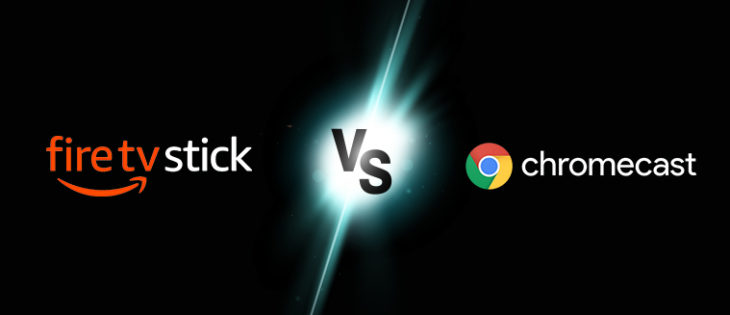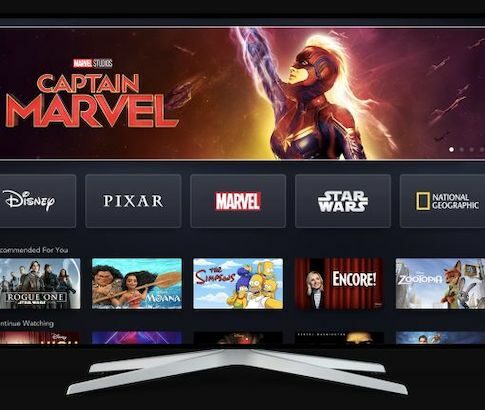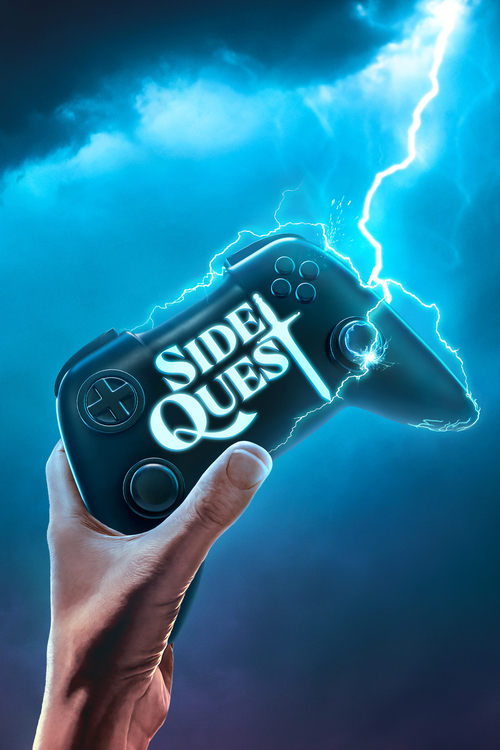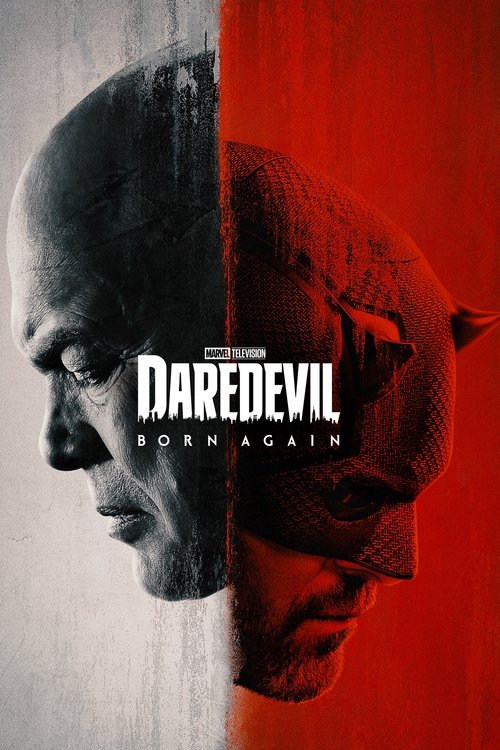
When you’re in the market for a streaming device that doesn’t cost the earth but can deliver all your favourite video streaming services to your TV without any hassles, there’s long been a king of the hill — the Google Chromecast, the $59 dongle that does it all. But now it’s got a battle on its hands — and Amazon’s $59 Fire TV Stick gives Google’s cheap offering a run for its money!
There’s some level of irony in comparing streaming devices from Google and Amazon — because the two gigantic companies have become increasingly competitive with one another, to the point where Google actually disabled the YouTube app on Amazon’s devices… because they could, we suppose (it’s since been restored after the two giants came to an agreement). And now here’s Amazon entering the Australian streaming-device market with a product that’s based on Google’s Android operating system — but a variation on it that Google’s not too thrilled about.
Just like Amazon’s legendary cold war with Apple, the antics of rich CEOs is all a lot less interesting than the devices their companies make. What we’re looking at here is the entry-level streaming market — devices for those with a TV that runs up to 1080p HD, but doesn’t have any built-in “smart” streaming apps. Both the Chromecast and the Fire TV hit the right spot price-wise as an affordable and easy upgrade to an older TV, so what has each device got to offer? And which one’s the better fit for you?
In the Blue Corner — Amazon Fire TV Stick (Lite Edition)
A hugely popular device around the globe, the so-called “Lite Edition” of the Amazon Fire TV Stick is almost identical to the, err, not Lite edition sold in the US and UK. The difference was mainly the lack of Alexa voice control on the remote in the first model released here — an omission that’s been rectified with the 2020 version, though it’s specifically billed as “Alexa Voice Remote Lite” for some reason. How that differs from “full” Alexa (as seen on Amazon’s Echo devices) remains to be seen.
The Fire TV Stick retails for $59 and is, as the name suggests, a stick-shaped device — a little bit bigger than a pack of chewing gum, with all the smarts and the HDMI connection in the one compact little device. You can plug it directly into a spare HDMI port on your TV or AV receiver — but you’ll probably find its sheer width to be a problem if anything’s plugged into the HDMI inputs next to it. To solve that problem, a short HDMI extender cable is supplied in the box so you can dangle the stick away from the TV (which also has the side benefit of improving Wi-Fi reception).
Because it’s an HDMI device, not USB, it’s not self-powered — you need to plug in the supplied power adapter before you can power up the stick. With that done, though, tap on the simple but well-built remote control and you’ve got yourself a streaming device.
The on-screen menu might look familiar if you’ve used Amazon Prime Video before — it’s basically a hybrid of that mixed with a range of apps for other services. But it’s the Prime Video app and apps for other Amazon services that are, unsurprisingly, installed by default and front and centre in the initial menu.
Fire TV is a very popular platform and as such, apps for just about everything are available for it — from Netflix to Spotify, from Twitch to TED and a huge range of stuff in between. Shortcuts to the popular ones are pre-installed, but you’ll soon go exploring in the Amazon app store (the main menu directly integrates with it) to find apps both essential and interesting.
Australian apps don’t fare quite as well. Stan took a while to deliver a Fire TV app, and some Australian TV network catch-up services are still not there (SBS On Demand and 10 Play are brand new, very late arrivals). The Fire TV platform is very similar to the Android platform and free to develop for, so hopefully the lack of Aussie-based apps will change as more people pick up Fire TV devices, but in the meantime, be aware you might have a wait if free-to-air catch-up’s what you’re after.
This Fire TV device tops out at 1080p HD, so it’s ideal for anyone with a standard HD television. Amazon has still not released the 4K-capable versions of the Fire TV series in Australia.
In the Red Corner — Google Chromecast (2nd Generation)
The venerable Chromecast arrived as a stick-like device as well, before morphing into the disc-shaped dongle you see today (mainly Google’s way of getting the device out from behind the TV and the cramped HDMI ports, for easier connection and better Wi-Fi reception). As one of the earliest low-cost streaming devices — and at the time quite unique in the way it went about doing it — Chromecast remains one of the most versatile streaming devices money can buy.
 Featured
FeaturedSelling for $59, Google’s device initially may seem a little daunting compared to Amazon’s menu-driven, remote-equipped little beast. But appearances can be deceptive. While Chromecast has no on-screen menus and no remote control, it boasts an effective library of apps larger than any other streaming device on the planet. The most recently available statistics are from 2015, when there were 20,000 Chromecast-enabled apps available. Twenty thousand. It’s a testament to the genius of the concept — keep the user interface on the user’s phone or tablet, inside the already-existing app for whatever streaming service you’re using.
So all a company like Netflix or Stan has to do is add Chromecast support to their already existing apps — something that’s both free and easy to implement — and that app can now send video streams over your Wi-Fi network to your Chromecast to display on your screen. It’s wonderfully simple and elegant, and the best part is, it just works.
The down side? The need to keep your phone or tablet handy at all times to control playback and choose what to play next. There is a rudimentary on-screen display showing what you’re watching and where you’re up to — and you can control playback using your TV’s remote if your TV supports HDMI device control, but otherwise it’s down to you and your touch screen. Whether or not that bothers you will depend on how attached you are to on-screen menus and the trusty remote. And changing any settings on the Chromecast itself requires an app, too.
The Game Changer – Chromecast with Google TV
Up until now, the comparison between Fire TV Stick and Chromecast has been a straightforward one – do you want an on-screen user interface and the ability to run apps, or do you just want to control everything from your smartphone and “cast” to your TV? In October 2020, Google changed thing up a bit with the announcement of the latest Chromecast model – a slightly larger (but still dongle-sized) device that comes with a remote control, and which uses an on-screen user interface like the Fire TV Stick does.
It’s not a complete levelling of the playing field, though. While the HD Chromecast can still be had for $59 (and sometimes less), the same price as the Fire TV Stick, the new 2020 “Chromecast with Google TV” sells for a more wallet-punishing $99. However, for the extra money you get full support for 4K Ultra HD, Dolby Vision and Dolby Atmos – none of which the Fire TV Stick can do (well, not the version sold in Australia, anyway).
The new Chromecast’s user interface is Google’s latest take on its popular Android TV operating system, which will look familiar to anyone who’s used a recent Sony smart TV or the Foxtel Now and Vodafone TV boxes. It means you can download the apps for all your favourite streaming services and browse their offerings on screen with the remote, no phone or tablet needed (though if you want to cast from your device, a Chromecast Ultra is built in to take care of it for you).
The new remote features Google Assistant voice integration, so in that department it’s going head to head with Amazon’s addition of Alexa on its Fire TV remote. Google says you’ll be able to use it for more than just TV control and streaming searches, though – it’s able to control smart devices in your home like cameras, lamps and smart speakers (as long as they’re compatible with the Google ecosystem, of course).
The hefty extra cost means that it’s not directly comparable to Amazon’s offering – but it’s an added expense worth taking into account when you’re buying, especially if you have a 4K-capable TV.
The Winner Is…
We love the Chromecast here at CompareTV. We love how it brought cheap streaming to everyone, we love how every app under the sun supports streaming to it, and we even love the configurable screensavers, so you can send your own photos up on your screen if you’re in the mood to. But it’s hard to deny the sheer elegance of Amazon’s solution — the Fire TV Stick is similarly compact and versatile — but it manages to cram in an actual user interface under the control of a very solid Bluetooth remote.
There’s just something about browsing for content on the screen that’s both intuitive and appealing, and for that reason as much as anything, we’re leaning on the side of the Amazon Fire TV Stick. It helps that the on-screen display means support for more than just streaming, too — hell, you can even download games for it if you want!
But Australian app support is still lacking. It will improve, but it’s something to be aware of before you buy one expecting to fire it up and start streaming your favourite show. Chromecast, meanwhile, happily works with every Australian streaming app that means anything.
Amazon has a real winner with the Fire TV Stick. It’s already a great value, and once a few missing apps arrive, it’ll be unbeatable at the price.




















